Enjoying the content on 3QD? Help keep us going by donating now.
Category: Recommended Reading
Love and Death: Tennyson’s ‘In Memoriam’
Enjoying the content on 3QD? Help keep us going by donating now.
The Age of AI Drone Warfare Is Coming
Charles Ferguson at Project Syndicate:
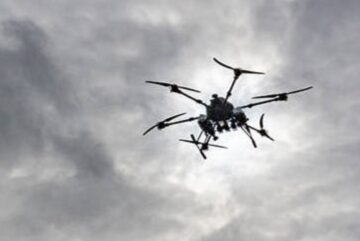 Consider the lessons of the Ukraine war so far. First, the impact of drones goes far beyond legacy weapons. Drones have indeed rendered tanks and armored personnel carriers extremely vulnerable, so Russian ground assaults now frequently use troops on foot, motorcycles, or all-terrain vehicles. But this hasn’t helped, because drones are terrifyingly effective against people as well. Casualties are as high as ever – but now, drones inflict over 70% of casualties on both sides.
Consider the lessons of the Ukraine war so far. First, the impact of drones goes far beyond legacy weapons. Drones have indeed rendered tanks and armored personnel carriers extremely vulnerable, so Russian ground assaults now frequently use troops on foot, motorcycles, or all-terrain vehicles. But this hasn’t helped, because drones are terrifyingly effective against people as well. Casualties are as high as ever – but now, drones inflict over 70% of casualties on both sides.
Drones are also effective against almost everything else. Ukraine has used drones to destroy Russian targets as varied as weapons factories, moving trains, ammunition stores, oil refineries, ships, and ports. It could be worse; in fact, Ukraine has shown great restraint, considering Russia’s barbaric conduct.
More here.
Enjoying the content on 3QD? Help keep us going by donating now.
The Hope And Hysteria Of American Marxism
Mathias Fuelling at The Baffler:
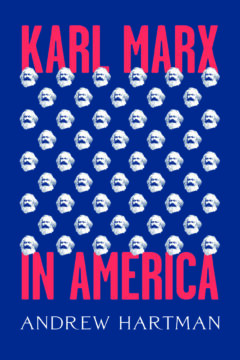 Condensing the history of Marxist thought in the United States to one volume is an unenviable task. For those immersed in Marxism, the result is bound to be woefully inadequate, and it risks alienating the merely Marx-curious with its vastness and complexity. It’s a tall order to produce something thorough yet accessible, succinct but rigorous, without coming off as yet another short introduction to Marxism (of which there are no end) or as a dense tome only appropriate for the initiated. Fortunately for all comers, Andrew Hartman has pulled off this feat, more or less, with Karl Marx in America. Hartman’s book is now the best available on the subject, though admittedly it is a small field, displacing Paul Buhle’s Marxism in the United States (published 1987, updated 2013) and John Nichols’s The “S” Word: A Short History of an American Tradition . . . Socialism (2011, updated 2015). Hartman’s specialization as an intellectual historian serves him well, having previously chronicled the political battles over education in the United States during the Cold War, as well as the history of the culture wars since the 1960s.
Condensing the history of Marxist thought in the United States to one volume is an unenviable task. For those immersed in Marxism, the result is bound to be woefully inadequate, and it risks alienating the merely Marx-curious with its vastness and complexity. It’s a tall order to produce something thorough yet accessible, succinct but rigorous, without coming off as yet another short introduction to Marxism (of which there are no end) or as a dense tome only appropriate for the initiated. Fortunately for all comers, Andrew Hartman has pulled off this feat, more or less, with Karl Marx in America. Hartman’s book is now the best available on the subject, though admittedly it is a small field, displacing Paul Buhle’s Marxism in the United States (published 1987, updated 2013) and John Nichols’s The “S” Word: A Short History of an American Tradition . . . Socialism (2011, updated 2015). Hartman’s specialization as an intellectual historian serves him well, having previously chronicled the political battles over education in the United States during the Cold War, as well as the history of the culture wars since the 1960s.
Hartman adheres to a basic schema: Marxism is a pillar of American political thought—not always as an explicit tradition but rather as the ghost in the machine—a powerful, often oppositional force influencing Americans of all political persuasions.
more here.
Enjoying the content on 3QD? Help keep us going by donating now.
The Wall by Marlen Haushofer
From The Exiled Soul Library:
 The Wall is a story of an unnamed woman in her 40s who finds herself cut off from the rest of the world by the sudden appearance of the wall made of unknow material that separates a part of the forest from the rest of the world. This occurrence takes place during the narrator’s visit to her cousin, Luise’s and her husband, Hugo’s lodge in the Austrian Alps. She was unable to find an explanation for the appearance of the wall and was not sure if only the valley or the whole country had been affected by this disaster. Thanks to Hugo the narrator had provisions that would keep her through some time, and a lifetime’s supply of wood. that allowed her to survive. She also had their dog, Lynx who became an integral part of her new life along with two cats and the cow. They became her new family. At the time when the wall appeared the narrator was widowed for two years, and her two daughters were almost grown up.
The Wall is a story of an unnamed woman in her 40s who finds herself cut off from the rest of the world by the sudden appearance of the wall made of unknow material that separates a part of the forest from the rest of the world. This occurrence takes place during the narrator’s visit to her cousin, Luise’s and her husband, Hugo’s lodge in the Austrian Alps. She was unable to find an explanation for the appearance of the wall and was not sure if only the valley or the whole country had been affected by this disaster. Thanks to Hugo the narrator had provisions that would keep her through some time, and a lifetime’s supply of wood. that allowed her to survive. She also had their dog, Lynx who became an integral part of her new life along with two cats and the cow. They became her new family. At the time when the wall appeared the narrator was widowed for two years, and her two daughters were almost grown up.
“I’d spent most of my life struggling with daily human concerns. (…) Since my childhood I had forgotten how to see things with my own eyes (…); loneliness led me, in moments free of memory and consciousness, to see the brilliance of life again. (…) I don’t know whether I will be able to bear living with reality alone. (…) I’m still a human being who thinks and feels. (…) That’s why I am sitting here writing down everything that’s happened (…). Writing is all that matters, and as there are no other conversations left, I have to keep the endless conversation with myself alive.”
More here.
Enjoying the content on 3QD? Help keep us going by donating now.
The Benson Diaries
Piers Brendon at Literary Review:
 Benson was acerbic and often hilarious about other authors. He describes Henry James’s talk as boring but ‘intricate, magniloquent, rhetorical, humorous’, and quotes him as saying that ‘the difference between being with [J M] Barrie & not being with him was infinitesimal’. Asked whether any of the actresses introduced to him by Ellen Terry were pretty, James replied, ‘I must not go so far as to deny that one poor wanton had some species of cadaverous charm.’ Immensely fat, G K Chesterton got so hot at a Magdalene dinner that the sweat ran down his cigar and ‘hissed at the point’. Hilaire Belloc was scintillating but frowsy and tipsy, living in something like a ‘gypsy encampment’, which, Benson thought, should be burned to the ground. Accompanied by Edmund Gosse, Benson visited Thomas Hardy, whose features were ‘curiously worn & blurred & ruinous’; they might have belonged to ‘a retired half-pay officer, from a not very smart regiment’. Although admiring H G Wells, Benson deprecated his ‘strong cockney accent’ and his ‘glorification of animalism’.
Benson was acerbic and often hilarious about other authors. He describes Henry James’s talk as boring but ‘intricate, magniloquent, rhetorical, humorous’, and quotes him as saying that ‘the difference between being with [J M] Barrie & not being with him was infinitesimal’. Asked whether any of the actresses introduced to him by Ellen Terry were pretty, James replied, ‘I must not go so far as to deny that one poor wanton had some species of cadaverous charm.’ Immensely fat, G K Chesterton got so hot at a Magdalene dinner that the sweat ran down his cigar and ‘hissed at the point’. Hilaire Belloc was scintillating but frowsy and tipsy, living in something like a ‘gypsy encampment’, which, Benson thought, should be burned to the ground. Accompanied by Edmund Gosse, Benson visited Thomas Hardy, whose features were ‘curiously worn & blurred & ruinous’; they might have belonged to ‘a retired half-pay officer, from a not very smart regiment’. Although admiring H G Wells, Benson deprecated his ‘strong cockney accent’ and his ‘glorification of animalism’.
As this suggests, Benson shared many of the social prejudices of his day. He extolled gentlemanliness and his favourite term of abuse was ‘ill-bred’. Admitting to a personal deficiency, he disliked most women, excluding them from his public lectures and regarding them as ‘an inferior race’. Brought up to be ashamed of sex, he was revolted by ‘slobbering osculations’ and ‘dog-like & promiscuous amours’.
more here.
Enjoying the content on 3QD? Help keep us going by donating now.
Preparing for Disease X in a Changing World
Shelby Bradford in The Scientist:
 COVID-19 took the world by storm in early 2020, being declared a pandemic in March of that year. While it was the most recent emerging infectious disease, experts anticipate it won’t be the last. Well before COVID-19, scientists have been prepping for emergence of an unforeseen pandemic: a Disease X (also called pathogen X).1 In 2018, WHO first introduced the term Disease X, described as “an unknown pathogen that could cause a serious international epidemic.”
COVID-19 took the world by storm in early 2020, being declared a pandemic in March of that year. While it was the most recent emerging infectious disease, experts anticipate it won’t be the last. Well before COVID-19, scientists have been prepping for emergence of an unforeseen pandemic: a Disease X (also called pathogen X).1 In 2018, WHO first introduced the term Disease X, described as “an unknown pathogen that could cause a serious international epidemic.”
“Pathogen X could be anything, including a pathogen that we already have that just mutates in a way that we have never thought about, and instantly becomes a monster,” said Kariuki Njenga, a virologist at Washington State University (WSU), explores emerging and re-emerging infectious diseases. “Or it could be something that we have never seen before, like SARS-CoV-2.” The question is: When this pathogen emerges, will researchers, and the world, be ready?
More here.
Enjoying the content on 3QD? Help keep us going by donating now.
Wednesday Poem
Almost
They’ve built porches with striped awnings
in the hallways of the dementia unit. Put in
a few squares of astroturf, a border of plastic tulips.
When we walk out in the mornings we forget
where we’ve been; we enter a village
that is almost familiar—its street signs and big blue
government mailbox. But where is the feral cat
who used to come looking for cream?
Everywhere we turn, the day is new.
As are the neighbors—the endless chain
of kind and cantankerous strangers. All
the comings and goings. We wonder when
it will rain again. And what about
the winds? What happened to the winds
that could undress us of our cares?
And what happened to those long
December nights & their sudden onset
of flurries that would touch us so
lightly it almost felt like love?
by Prartho Sereno:
from Rattle #87, Spring 2025
Enjoying the content on 3QD? Help keep us going by donating now.
Tuesday, June 10, 2025
Five Things to Know About Assisted Dying in Canada
Katie Engelhart in the New York Times:
 In 2023, one out of 20 Canadians who died received a physician-assisted death, making Canada the No. 1 provider of medical assistance in dying (MAID) in the world, when measured in total figures. In one province, Quebec, there were more MAID deaths per capita than anywhere else. Canadians, by and large, have been supportive of this trend. A 2022 poll showed that a stunning 86 percent of Canadians supported MAID’s legalization.
In 2023, one out of 20 Canadians who died received a physician-assisted death, making Canada the No. 1 provider of medical assistance in dying (MAID) in the world, when measured in total figures. In one province, Quebec, there were more MAID deaths per capita than anywhere else. Canadians, by and large, have been supportive of this trend. A 2022 poll showed that a stunning 86 percent of Canadians supported MAID’s legalization.
But in some corners, MAID has been the subject of a growing unease. While MAID in Canada was initially restricted to patients with terminal conditions — people whose natural deaths were “reasonably foreseeable” — the law was controversially amended in 2021 to include people who were suffering but who weren’t actually dying: patients who might have many years or even decades of life ahead of them. This new category includes people with chronic pain and physical disabilities.
More here.
Enjoying the content on 3QD? Help keep us going by donating now.
What happens the day after humanity creates AGI?
Louis Rosenberg at Big Think:
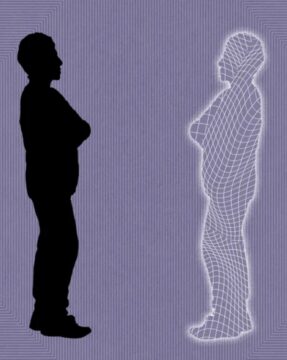 From knowledge and expertise to planning, reasoning, creativity, and problem-solving, we could soon find ourselves thoroughly outmatched. This is a genuine possibility in the very near future, and nobody I know is honestly confronting the profound (and potentially demoralizing) impact it could have on our identity as humans.
From knowledge and expertise to planning, reasoning, creativity, and problem-solving, we could soon find ourselves thoroughly outmatched. This is a genuine possibility in the very near future, and nobody I know is honestly confronting the profound (and potentially demoralizing) impact it could have on our identity as humans.
I apply this criticism to myself as well. I have been writing about the dangers of superintelligence for well over a decade, and I, too, have focused on specific tactical risks such as the AI manipulation problem and the arrival mind paradox. At the same time, I have failed to honestly confront what life will really feel like when we humans collectively realize we have lost cognitive supremacy on planet Earth and will likely never get it back.
No, that last statement is not personal enough.
More here.
Enjoying the content on 3QD? Help keep us going by donating now.
Ilya Sutskever: University of Toronto honorary degree, short speech
Enjoying the content on 3QD? Help keep us going by donating now.
Autocrats don’t act like Hitler or Stalin anymore − instead of governing with violence, they use manipulation
Daniel Treisman in The Conversation:
 In the early 2000s, political scientist Andreas Schedler coined the term “electoral authoritarianism” to describe regimes that hold elections without real competition. Scholars Steven Levitsky and Lucan Way use another phrase, “competitive authoritarianism,” for systems in which opposition parties exist but leaders undermine them through censorship, electoral fraud or legal manipulation.
In the early 2000s, political scientist Andreas Schedler coined the term “electoral authoritarianism” to describe regimes that hold elections without real competition. Scholars Steven Levitsky and Lucan Way use another phrase, “competitive authoritarianism,” for systems in which opposition parties exist but leaders undermine them through censorship, electoral fraud or legal manipulation.
In my own work with economist Sergei Guriev, we explore a broader strategy that modern autocrats use to gain and maintain power. We call this “informational autocracy” or “spin dictatorship.”
These leaders don’t rely on violent repression. Instead, they craft the illusion that they are competent, democratic defenders of the nation – protecting it from foreign threats or internal enemies who seek to undermine its culture or steal its wealth.
More here.
Enjoying the content on 3QD? Help keep us going by donating now.
Medicine’s rapid adoption of AI has researchers concerned
Mariana Lenharo in Nature:
 Artificial intelligence (AI) already helps clinicians to make diagnoses, triage critical cases and transcribe clinical notes in hospitals across the United States. But regulation of medical AI products has not kept up with the rapid pace of their adoption, argue researchers in a report published on 5 June in PLOS Digital Health1. The authors point to limitations in how the US Food and Drug Administration (FDA) approves these devices, and propose broader strategies that extend beyond the agency to help ensure that medical AI tools are safe and effective.
Artificial intelligence (AI) already helps clinicians to make diagnoses, triage critical cases and transcribe clinical notes in hospitals across the United States. But regulation of medical AI products has not kept up with the rapid pace of their adoption, argue researchers in a report published on 5 June in PLOS Digital Health1. The authors point to limitations in how the US Food and Drug Administration (FDA) approves these devices, and propose broader strategies that extend beyond the agency to help ensure that medical AI tools are safe and effective.
More than 1,000 medical AI products have been cleared by the FDA, and hospitals are rapidly adopting them. Unlike most other FDA-regulated products, AI tools continue to evolve after approval as they are updated or retrained on new data. This raises the need for continuous oversight, which current regulations have limited capacity to ensure.
More here.
Enjoying the content on 3QD? Help keep us going by donating now.
A Brain Implant That Turns Your Thoughts Into Text
Enjoying the content on 3QD? Help keep us going by donating now.
On Marianne Moore
Susan Gubar at Lit Hub:
 At midcentury, Marianne Moore emerged as a public personage, but not before a painful period of loss. Prefaced by a host of personal disasters—the death of her mother’s onetime partner Mary Norcross, her own hospitalization for digestive problems, her mother’s painful shingles and neuralgia—the decade of the 1940s brought sorrow. Moore had to deal with the rejection of her only attempt at a novel and the news that her Selected Poems had been remaindered at thirty cents a copy. Bouts of bursitis and bronchitis prompted her to hire a succession of nurses and helpers, one of whom—Gladys Berry—would work for Moore into her old age.
At midcentury, Marianne Moore emerged as a public personage, but not before a painful period of loss. Prefaced by a host of personal disasters—the death of her mother’s onetime partner Mary Norcross, her own hospitalization for digestive problems, her mother’s painful shingles and neuralgia—the decade of the 1940s brought sorrow. Moore had to deal with the rejection of her only attempt at a novel and the news that her Selected Poems had been remaindered at thirty cents a copy. Bouts of bursitis and bronchitis prompted her to hire a succession of nurses and helpers, one of whom—Gladys Berry—would work for Moore into her old age.
The busy rounds of teaching, conference going, and verse or letter writing were interrupted by her mother’s “battle to eat; or rather to swallow,” Moore explained to Pound: “I cannot write letters or even receive them.” To Bryher, she listed the ingredients—“dehydrated goat-milk, vegetable iron, brewers’ yeast”—she used to nourish her mother. After one visit, Bryher described being “terrified” about the poet: “she could not eat if Mother could not eat, and thus got rashes and kidney trouble and pains.” Caregiving confined Moore to the Brooklyn apartment, where she started juicing vegetables.
more here.
Enjoying the content on 3QD? Help keep us going by donating now.
Gabriel Orozco: Sculpture Between Spectacle And Use Value
Benjamin Buchloh at Artforum:
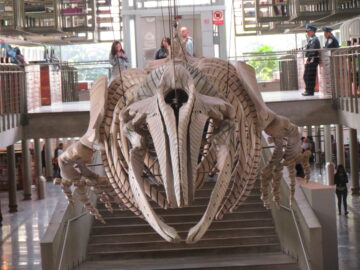 WHEN MARCEL DUCHAMP mounted a challenge to Constantin Brancusi during a joint visit to an exhibition of new airplane technologies in Paris in 1912—asking Brancusi whether he could ever sculpt anything as perfect as an airplane propeller—he figured a contradiction that haunted sculptural production for the remaining part of the twentieth century and into the first two decades of the twenty-first: the dialectics between traditional artisanal and artistic modes of sculptural production and the ever more compelling paradigm of the technologically produced readymade. Obviously, this dialectic has been constitutive of Gabriel Orozco’s work from the very beginning and determines it to this very day.
WHEN MARCEL DUCHAMP mounted a challenge to Constantin Brancusi during a joint visit to an exhibition of new airplane technologies in Paris in 1912—asking Brancusi whether he could ever sculpt anything as perfect as an airplane propeller—he figured a contradiction that haunted sculptural production for the remaining part of the twentieth century and into the first two decades of the twenty-first: the dialectics between traditional artisanal and artistic modes of sculptural production and the ever more compelling paradigm of the technologically produced readymade. Obviously, this dialectic has been constitutive of Gabriel Orozco’s work from the very beginning and determines it to this very day.
But the challenge addresses an even more pertinent question: Which, if any, of the traditional modes of sculptural production—e.g., modeling, cutting, and casting—is still viable and credible in the present at all? And how do we relate to a sculptural oeuvre like Orozco’s in which the artist continues to deploy all these supposedly outdated modes simultaneously (occupying in fact an almost unique position among sculptors since the second half of the twentieth century)?
more here.
Enjoying the content on 3QD? Help keep us going by donating now.
Tuesday Poem
Too Liberal
Does this old poop have any advice
for young people in times of such
awful trouble? Well, I’m sure you know
our country is the only so-called advanced
nation that still has a death penalty.
And torture chambers. I mean,
why screw around?
But listen, if anyone here
should wind up on a gurney
in a lethal injection facility,
maybe the one at Terra Haute,
here is what your last word should be:
“This will certainly teach me a lesson.”
If Jesus were alive today, we would kill him
with lethal injection. I call that progress.
We would have to kill him for the same reason
he was killed the first time.
His ideas are too liberal.
by Kurt Vonnegut
from Armageddon in Retrospect
J.P Putnam’s Sons Publishers, 2008
Enjoying the content on 3QD? Help keep us going by donating now.
Monday, June 9, 2025
3 Quarks Daily Is Looking For New Columnists
 Dear Reader,
Dear Reader,
Here’s your chance to say what you want to the large number of highly educated readers that make up 3QD’s international audience. Several of our regular columnists have had to cut back or even completely quit their columns for 3QD because of other personal and professional commitments and so we are looking for a few new voices. We do not pay, but it is a good chance to draw attention to subjects you are interested in, and to get feedback from us and from our readers.
We would certainly love for our pool of writers to reflect the diversity of our readers in every way, including gender, age, ethnicity, race, sexual orientation, etc., and we encourage people of all kinds to apply. And we like unusual voices and varied viewpoints. So please send us something. What have you got to lose? Click on “Read more” below…
NEW POSTS BELOW
What Mike Tyson Learned from His Mother (and Alexander the Great)
Mark Kriegel at Literary Hub:
 In December 2013, not long after the publication of Mike Tyson’s autobiography, The Wall Street Journal asked him—along with forty‑nine other distinguished writers, academics, artists, politicians, and CEOs—to name their favorite books of the year. Among Tyson’s selections was a Kindle book, Alexander the Great: The Macedonian Who Conquered the World.
In December 2013, not long after the publication of Mike Tyson’s autobiography, The Wall Street Journal asked him—along with forty‑nine other distinguished writers, academics, artists, politicians, and CEOs—to name their favorite books of the year. Among Tyson’s selections was a Kindle book, Alexander the Great: The Macedonian Who Conquered the World.
“Everyone thinks Alexander was this giant, but he was really a runt,” wrote Tyson, who nevertheless, at the height of his own megalomania, commissioned a seven‑foot likeness of Alexander (along with congruently sized statues of Genghis Khan and the Haitian revolutionary Jean‑Jacques Dessalines) by the pool of his Las Vegas home.
“Alexander, Napoleon, Genghis Khan, even a cold pimp like Iceberg Slim—they were all mama’s boys,” wrote Tyson. “That’s why Alexander kept pushing forward. He didn’t want to have to go home and be dominated by his mother.”
More here.
Enjoying the content on 3QD? Help keep us going by donating now.
How Much Energy Does It Take To Think?
Conor Feehly in Quanta:
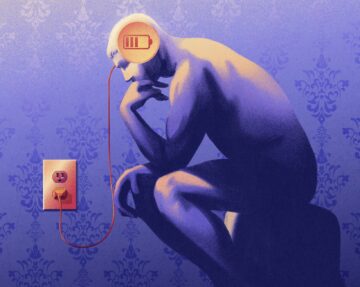 Sharna Jamadar(opens a new tab), a neuroscientist at Monash University in Australia, and her colleagues reviewed research from her lab and others around the world to estimate the metabolic cost of cognition(opens a new tab) — that is, how much energy it takes to power the human brain. Surprisingly, they concluded that effortful, goal-directed tasks use only 5% more energy than restful brain activity. In other words, we use our brain just a small fraction more when engaging in focused cognition than when the engine is idling.
Sharna Jamadar(opens a new tab), a neuroscientist at Monash University in Australia, and her colleagues reviewed research from her lab and others around the world to estimate the metabolic cost of cognition(opens a new tab) — that is, how much energy it takes to power the human brain. Surprisingly, they concluded that effortful, goal-directed tasks use only 5% more energy than restful brain activity. In other words, we use our brain just a small fraction more when engaging in focused cognition than when the engine is idling.
It often feels as though we allocate our mental energy through strenuous attention and focus. But the new research builds on a growing understanding that the majority of the brain’s function goes to maintenance. While many neuroscientists have historically focused on active, outward cognition, such as attention, problem-solving, working memory and decision-making, it’s becoming clear that beneath the surface, our background processing is a hidden hive of activity.
More here.
Enjoying the content on 3QD? Help keep us going by donating now.
